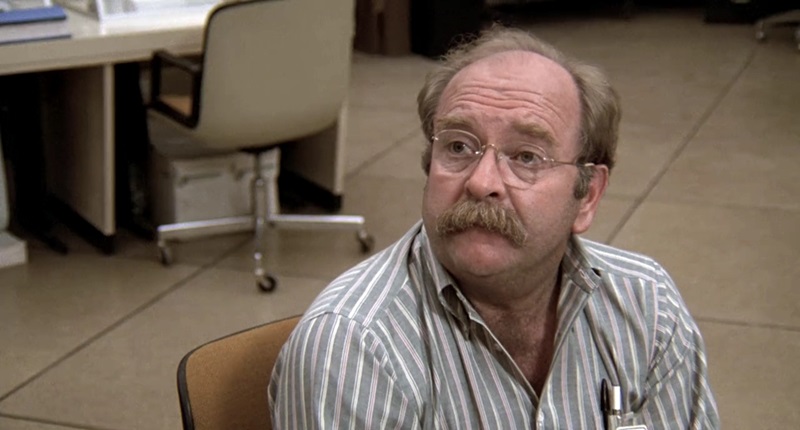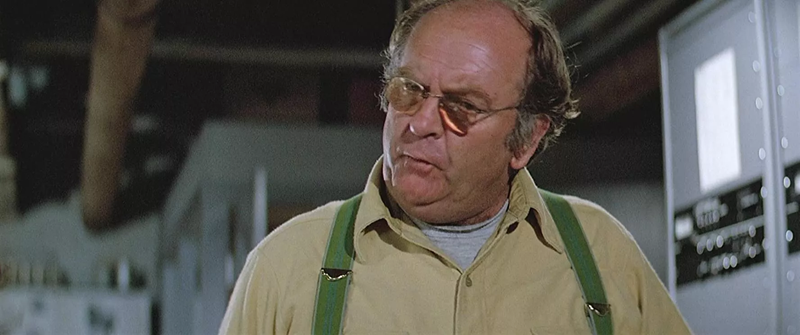Wilford Brimley, an iconic figure in the film industry, was born on September 27, 1934 in Salt Lake City, Utah. His journey to stardom was not a conventional one. As a young man, he worked as a blacksmith, cowboy, and bodyguard, experiences that would later inform his on-screen persona.
His distinctive moustache and gruff demeanor became his trademark, contributing to his success in a variety of roles. Brimley’s breakthrough came with his performance in the 1970s television series «The Waltons,» which catapult good-natured yet tough-talking characters into the limelight. He was also known for his roles in films like «Cocoon,» «The Thing,» and «The Natural.»
Throughout his career, Brimley was admired for his authenticity. He did not conform to the Hollywood stereotype, instead choosing to remain true to his roots. This was evident in his performances, which often reflected his own life experiences. He was known for portraying characters with a strong moral compass, a trait that resonated with audiences and critics alike. His performances were characterized by deep emotion and a clear sense of purpose, which further elevated his status in the industry.
In addition to his acting career, Brimley was also a spokesperson for Quaker Oats and Liberty Medical, where he used his platform to raise awareness about diabetes, a condition he was diagnosed with in the late 1970s. His sincerity and straightforwardness in these campaigns won him praise and recognition, further solidifying his status as a beloved figure in American pop culture.
Even after his retirement, Brimley remained active in the film community. He was often seen at film festivals and conventions, where he would share his experiences and insights with fans and aspiring actors. He was also an avid jazz singer, showcasing his talent at various events and concerts. Despite his successful career, Brimley always remained humble and approachable, often stating that he was just an «ordinary guy» who was lucky enough to do what he loved for a living.
His passing on August 1, 2020, marked the end of an era. Brimley left behind a rich body of work that continues to entertain and inspire. His legacy is one of authenticity and integrity, values that he embodied both on and off screen. His life story serves as an inspiration to anyone seeking to make a name in the film industry, reminding us that success can come from the most unexpected places, and that staying true to oneself is the most important thing. Wilford Brimley’s life and career were indeed a testament to the power of authenticity and the enduring appeal of characters who are, above all, real.
Career Breakthroughs and Iconic Roles
Career breakthroughs and iconic roles are defining moments in an actor’s career that can set the trajectory for their future endeavors. They serve as a springboard to stardom, catapulting relatively unknown actors into the global spotlight. An iconic role is often a character so thoroughly embodied by the actor that it becomes impossible to dissociate the two; it can be a blessing as it secures their place in the annals of cinematic history, or a curse, as it can limit their perceived range. A career breakthrough, on the other hand, is a pivotal moment, a turning point that propels an actor from obscurity into recognition.
For instance, consider Leonardo DiCaprio’s role in Titanic or Daniel Radcliffe in Harry Potter, both roles became significant milestones in their careers. Similarly, the character of Tony Stark in Marvel’s Iron Man series launched Robert Downey Jr. into an entirely new level of stardom. Such roles open a myriad of opportunities for the actors, allowing them to further explore their craft and showcase their talent in a variety of genres and roles.
However, the path to attaining these career-defining roles is not straightforward. It requires resilience, patience, and a healthy dose of luck. Many actors spend years honing their skills, navigating through minor roles and auditions before landing a role that puts them on the map. It’s a journey punctuated by rejections, near misses, and small victories that eventually culminate in that one breakthrough role.
Moreover, it’s crucial for actors not to rest on their laurels after achieving success, but to continually strive for excellence, diversify their roles, and push their creative boundaries. Career breakthroughs and iconic roles are not the end goal, but rather stepping stones in an actor’s journey, serving as a testament to their talent, dedication, and the myriad of possibilities that lie ahead.

Signature Roles and Recognizable Characters
Signature roles and recognizable characters are essential elements in the world of performing arts, particularly in the cinematic and theatrical sphere. They are pivotal in defining an actor’s career and shaping the public’s perception of their acting prowess. Signature roles refer to those characters that actors become most associated with, often because their performances are so memorable, impactful, or iconic for audiences. These are the characters that, when mentioned, instantly bring to mind the actor who portrayed them, such as Robert Downey Jr.’s portrayal of Iron Man or Daniel Radcliffe’s Harry Potter. These roles often become intrinsically linked with the actor, becoming a defining point in their career trajectory.
Recognizable characters, on the other hand, are those that have been created with such distinction and depth that their persona transcends the boundaries of a single performance or actor. These are the characters that have become cultural touchstones, resonating with audiences across generations and geographical boundaries. Examples of such characters include Sherlock Holmes, Batman, and James Bond, each of whom has been portrayed by multiple actors but remains immediately recognizable thanks to their unique characteristics, behaviors, and narrative arcs.
The intersection of signature roles and recognizable characters can often create a powerful impact, with actors bringing new dimensions to well-known characters, or recognizable characters enhancing the popularity and visibility of an actor. Both these elements contribute significantly to the richness, diversity, and appeal of the performing arts, offering audiences unforgettable performances and characters that endure beyond the confines of a single story or performance. They are an integral part of the magic of cinema and theatre, encapsulating the transformative power of storytelling and the enduring allure of compelling characters.
Personal Life and Off-Screen Interests
An individual’s personal life and off-screen interests play a significant role in shaping their personality, values, and overall character. These aspects can be highly varied and encompass a broad range of activities such as hobbies, leisure activities, socialization, and personal relationships. They are often a reflection of one’s preferences, passions, and individuality. For instance, someone might be passionate about music and spends their free time playing an instrument or attending concerts. Another may have an affinity for literature and dedicates their off-screen hours to reading and writing.
For public figures, such as actors and celebrities, their personal life and off-screen interests are often the subject of public curiosity. These figures may engage in philanthropy, sports, travel, or art, which can influence their public image and fan base. However, it’s essential to respect their privacy and remember that like anyone else, they have the right to a private life outside of their professional responsibilities.
For everyday people, personal life and off-screen interests provide a necessary break from work or school-related stress. These activities can contribute to personal growth and wellbeing, fostering creativity, relaxation, and happiness. They can also serve as a platform for developing skills and talents that may not be used in professional settings, but still add value to one’s life.
Furthermore, in today’s digital age where much of our lives are spent online, off-screen interests can help maintain a more balanced lifestyle. Engaging in physical activities, pursuing hobbies, or spending time with loved ones can help to disconnect from the digital world and foster a healthier relationship with technology.
In conclusion, personal life and off-screen interests are integral parts of our lives that contribute significantly to our overall wellbeing, identity, and lifestyle. Regardless of whether one is a public figure or not, these interests and activities are a fundamental part of our human experience, offering a much-needed respite from our professional lives and promoting a balanced lifestyle.

Advocacy and Public Appearances
Advocacy and public appearances are integral aspects of creating change and awareness in society. Advocacy is the act or process of supporting a cause or proposal, while public appearances refer to the act of presenting oneself or one’s organization to the public. It plays a pivotal role in shaping public opinion, initiating change, and promoting transparency. Advocacy relies heavily on the power of public speaking and the ability to persuade and influence others. It involves a deep understanding of the issue at hand, the ability to articulate the cause clearly, and the tenacity to stand up for it, regardless of potential backlash.
On the other hand, public appearances complement advocacy efforts by giving a face to the cause or issue. It is during these appearances that advocates can directly engage with the public, sharing their viewpoints, answering questions, addressing concerns, and swaying opinions. Public appearances can take various forms, such as speeches, debates, press conferences, or even social media posts. The key is to remain consistent and authentic, as any discrepancy between words and actions can undermine the credibility of the advocate or the organization they represent.
To be effective, advocates must not only be knowledgeable and passionate about their cause but must also possess excellent communication skills. They must be able to convey their message in a way that resonates with their audience, without resorting to manipulation or deception. Similarly, public appearances must be meticulously planned and executed. From the choice of venue and time to the delivery of the message, every detail can significantly impact the public’s perception and response.
In conclusion, advocacy and public appearances go hand in hand in fostering change and progress. Their power lies in their ability to reach and influence a broad audience, encouraging dialogue and action. By leveraging these tools, individuals, organizations, and communities can effect meaningful change and contribute to a more informed and engaged society.

Later Career and Legacy
Throughout the later stages of an individual’s professional life, their accomplishments, contributions, and influence often culminate in what is known as their career legacy. This legacy encapsulates the enduring impact they’ve had in their field, and it is a reflection of their dedication, innovation, and skill. Their career may have spanned several decades, with numerous ups and downs, but it is the sum total of their achievements and their influence on others that truly defines their legacy.
They may have pioneered new methodologies, mentored future leaders, or spearheaded significant projects, leaving an indelible mark on their industry or profession. Some individuals have even transcended their own field, impacting society on a broader scale, and in such cases their legacy extends far beyond their specific profession. For example, writers, artists, scientists, and leaders have created works, made discoveries, and implemented policies that have shaped societal norms, perspectives, and the course of history.
Regardless of the field, an individual’s career legacy is not just about their professional accomplishments, but also about the values they upheld, the relationships they built, and the way they used their influence. Such a legacy often continues to inspire and guide future generations long after the individual has retired or passed away. Therefore, the later stages of a career and the legacy it leaves are not just about the end of a professional journey, but about how that journey has made a difference to others and to the world. The true measure of a career is not just what an individual has gained from it, but what they have contributed to their field and to society at large.
